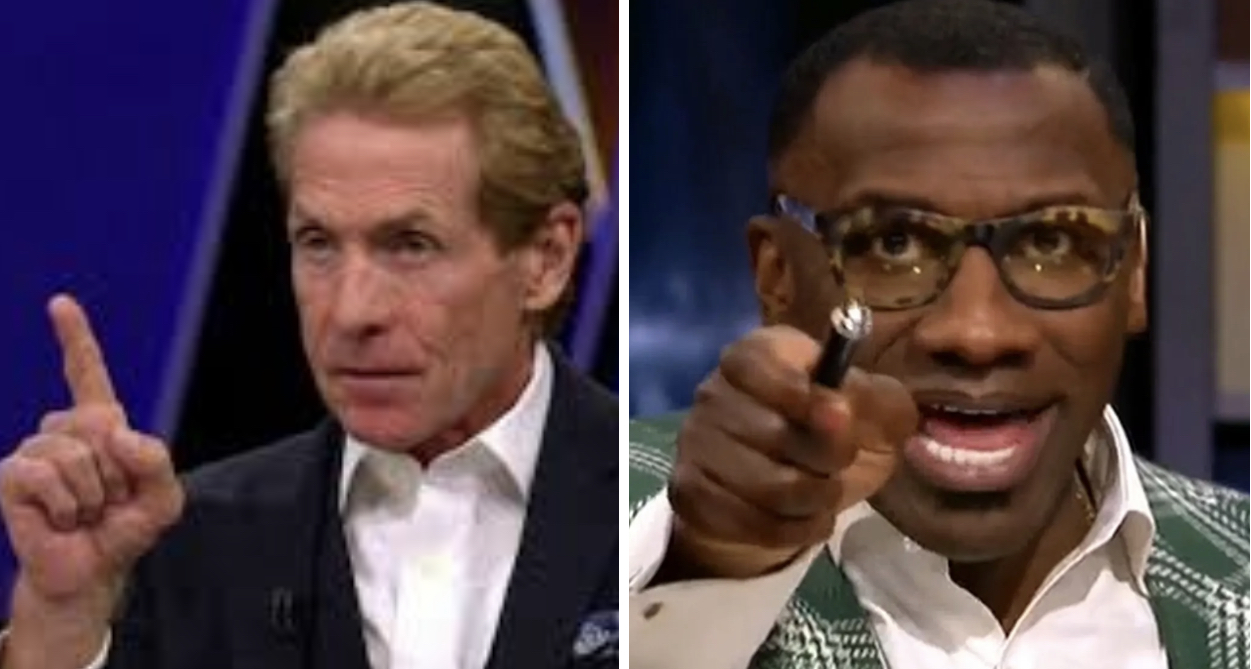Ones worldview is often gleaned from individual life experiences. As a child spending summer months in the Bronx with my father, a great number of my friends were from the Dominican Republic. Of course, I was used to being around Spanish-speaking people my entire life while growing up in Central Jersey, mostly Puerto Rican. So upon meeting these bronze-skinned people that spoke Spanish I automatically thought they were just Black Puerto Ricans much in the same manner that there are Black Americans. It didnt matter much early on. But each summer I became more and more curious as to their country of origin.
Finally, one summer I asked one of my fathers neighbors if they were from Puerto Rico. The question was innocent enough, but their consternation at the suggestion was so visceral that it almost caused a dust up on the block between Nelson Ave and Shakespeare.
Shaken by the incident, I didnt ask them any more questions that summer.
As I grew older I became more aware of certain phenotypes as they pertain to people of African descent and began to notice phenotypically classic African features manifested in my Dominican friends as we approached puberty. My curiosity could no longer be contained and I finally got up the nerve to ask another question.
Do you guys have Black in you?
The object of my inquiry was an older gentleman who sometimes played cards, drank beers and talked sh*t with my father. So I figured he was a safe person to ask.
He answered No, but a lot of us have Spanish and Indian in our blood line.
To me, ignorant of the politics, history and culture of the island, his answer was as good as any.
So time went on. I grew older, as did my South Bronx friends, and I learned more about the African Slave Trade and how every island in the Caribbean was shaped by it. The island of Hispaniola in particular.
In my studies I came across information about Christopher Columbus arrival on the island in 1492, his subjugation and extermination of the Taino who were native to the island and the legacy of his brother Bartholomew as well.
Like most other colonizing powers, the Spanish set up a social cast system throughout their empire in which citizens who were more visibly Eurocentric were held at a higher social strata than those with African features.
Additionally, the Haitian side of Hispaniola once dominated its Dominican neighbors. Although it was nearly 200 years ago, with the Haitian government being removed in 1844, these actions are burned into the national psyche of the Dominican people just like slavery is burned into the mind of many African Americans.
There were many slights to the Dominican people during this time: the confiscation of private property, the closing of churches and a mandatory draft for all Dominican males between the ages of 18-26 into the Haitian Army.
Eventually, Dominican and Haitian factions would join forces to oust Haitian ruler Jean-Pierre Boyer, a mulatto.
Afterwards, Haitians abolished slavery in the Dominican Republic in 1822. Two decades later, Juan Pablo Duarte, Matias Ramon Mella and Francisco del Rosario Sanchez declared DRs independence from the Haitian government.
The Haitian government would attempt and fail to invade the eastern portion of the island four times following its declaration of independence.
In 1861, wealthy cattle rancher Pedro Santana became a general in the Dominican Army while harboring ambitions to return the island to Spanish rule once again. The Haitian government was vehemently opposed to the return of colonial Spanish rule on the island and gave material and logistic support to the Dominican rebellion.
Spain would eventually abandon the island in 1865 and what followed would become a familiar pattern for the people of DR: more strife, war and revolt. Buenaventura Baez, a rival of Santana who wanted his country to be annexed by the United States, moved forward with his plan.
For its part, the United States government wanted to extend its military reach into the Caribbean to challenge fading colonial power Spain, and President Ulysses S. Grant was eyeing DR as a potential home for recently freed U.S. slaves as well. But the measure stalled in Congress by a measure of 28-28.
Santana would die in 1864 while Baez would be overthrown, return to power four years later and then overthrown again. The following two presidents (Ulises Heureeaux and Ramon Caceres) were both assassinated, which led to even more political upheaval on the island.
The United States would occupy the Dominican Republic for two years afterwards and was instrumental in reducing the debt, modernizing infrastructure and creating a national guard that was comprised of all warring factions.
Indeed, though most of the post-colonial rulers of Dominican Republic were of African descent to varying degrees, many fomented anti-Haitian sentiments in order to solidify their base against what was perceived to be a common foe.
In 1937. President Rafael Leonidas Trujillo Molina, who gained the presidency via treachery, ordered the Parsley Massacre in which he ordered the Dominican Army to kill Haitians living on the Dominican side of the border. Up to 35,000 Haitians were massacred over the course of six days from October 2 to October 8, 1937.
Despite all of this, Trujillo remained in power for more than 20 years following the massacre thanks in large part to support from the United States and the Dominican elite. He was ultimately assassinated in 1961 and the democratically elected president Juan Bosch was overthrown by a military coup in 1963. More political unrest and violence would plague the island over the next decade.
At some point the racial components and upheavals that were associated with DR largely faded from the historic record, but that was likely selective history rather than an actual phenomenon.
However, the true measure of the countrys national identity can never be truly hidden.
The CIA Factbook lists DRs population as being 74 percent mixed, 16 percent White and 11 percent Black. According to American ideas regarding race and ethnicity that cite an individuals ancestral origins rather than skin tone, the Dominican Republic is actually 84 percent of African descent. There are also an estimated 700,000 Haitians living in DR.
According to Mitochondrial DNA testing conducted in 2010, 15 percent of Dominicans are descended from a female Taino ancestor, another 15 percent are descended from what was described as European-MENA mtDNA haplogroups, while 70 percent have mtDNA indicative of an African origin. Long story short, most Dominican lineages come from the union of European men with African women.
The African Diaspora is not a cohesive unit. There are many generational prejudices and misconceptions that permeate and taint relationships between all people of African descent. Other than the hypocrisy inherent in the American democratic experiment, there is not a greater example of state sanctioned, culturally acceptable, racial scapegoating in the Western Hemisphere than that which has occurred on the island of Hispaniola.
When you look at famous people of Dominican descent in the United States, many of which play Major League Baseball, you would be hard pressed to distinguish a Dominican from an African American at first glance, or second glance for that matter. Pedro Martinez, David Ortiz, Manny Ramirez, Mariano Rivera and legions of other baseball players from the Dominican Republic could easily pass for Black if it werent for the accent. However, despite the consternation of many peoples of African descent living in America, many Dominicans refuse to recognize themselves as Black. Admittedly, that is not a cataclysmic happening in and of itself.
However, Dominicans of African descent who support the subjugation, expulsion and extermination of Haitians because they are of African descent represent the newly-coined concept of transracialism in a most horrific manner.
So not only are some denying their African roots despite having the obvious attributes of Black people (hair, hips, lips, noses, dark skin and rhythm), some are actualizing this self-hate by supporting acts of scapegoating, sabotage, subjugation and outright violence against their Haitian cousins.
Yes, I said cousins!
This past February, Henry Claude Jean, a Haitian national, was found hanging from a tree in the public square of the city of Santiago. According to his widow, his body was buried in secret. She went on to say that Claude Jeans sister lost two children in the same manner. Yet Dominican officials were quick to dismiss his death as being the result of a double cross from a theft perpetrated by other Haitians in league with Claude and not racist Dominicans.
Damn, that sounds a lot like the manner in which Eric Garner, Mike Brown, Jr and Tamir Rice were all vilified in the media of being complicit in their own deaths at the hands of law enforcement in the United States.
In 2013, a constitutional court undertook measures to strip citizenship from the children born to Haitian immigrants in DR dating back to 1929. Though the law was softened some the following year, many activists feel the measure still falls short.
Today hundreds of thousands of Haitian migrant workers are facing deportation from the Dominican Republic as the government recently passed a measure in which undocumented workers have until today (June 17) to register their presence in the country or face deportation.
This is ironic when considering the fact that thousands of Dominicans illegally entered Puerto Rico as undocumented immigrants via the Mona Passage and falsely claimed to be Puerto Rican in order to get to the United States faster.
Qu tan pronto nos olvidamos.
How soon we forget.
Many native Dominicans believe that the shortcomings of the Haitian government, as well as national catastrophes like the recent Haitian earthquake, have caused their government to groan under the strain of Haitian refugees and that the measures taken by the Dominican government are attempts at alleviating that strain. They say it is a matter of social, economic and political pragmatism rather than racism.
However, when contextualized by the history of the entire island of Hispaniola, it looks racist as all get up; but I will concede to the faint possibility that this has nothing at all to do with racism and that rapid xenophobia disguised as nationalism is to blame.
But in the end it really doesnt matter which one it is. Half a million people are at risk of being kicked out of the country.
I would be mistaken in not mentioning the Dominicans who joined in protests in the United States against the lynching of Claude Jean.
When I see people from DR I cannot help but see them in the same light as all other people of African descent; beautiful, gifted, resourceful and haunted by history.
I see them as Black folk, even if they themselves dont see it that way. To that end, this looks like Black-on-Black crime on a national scale, and that is tragic indeed.
No one has the right to define a people’s identity for them.
But that doesn’t stop me from side eyeing them like a mug from a distance.



